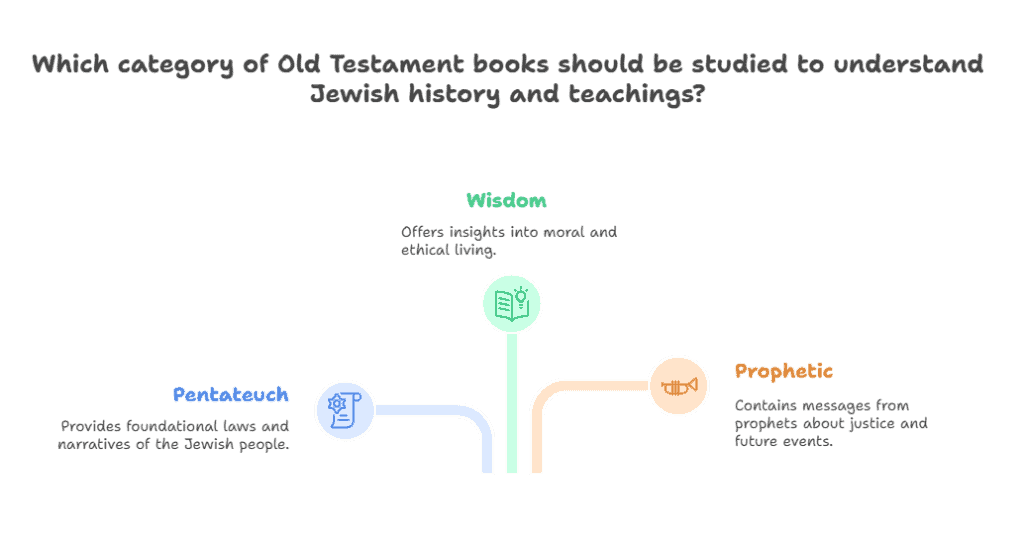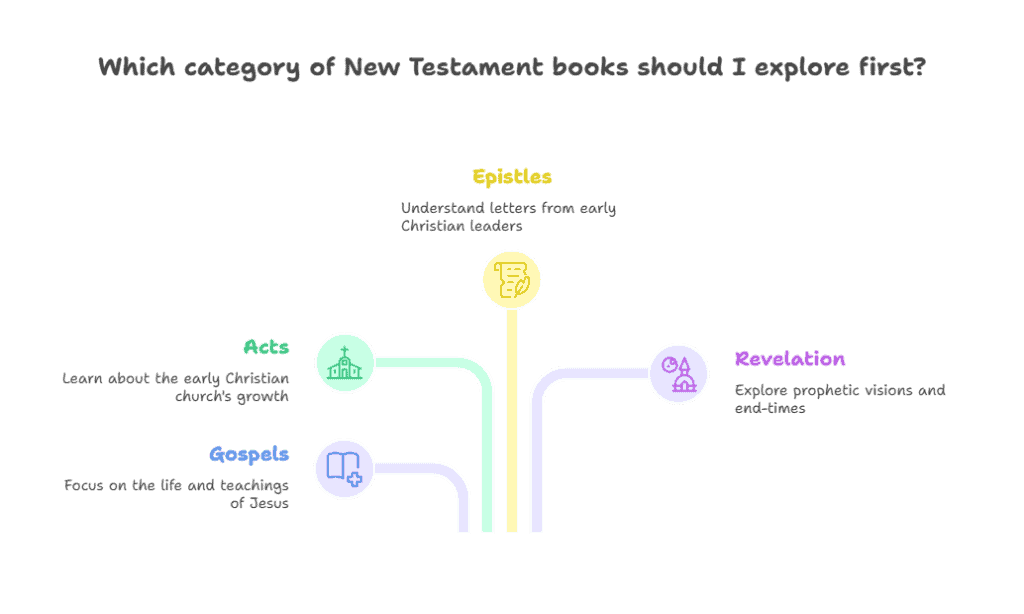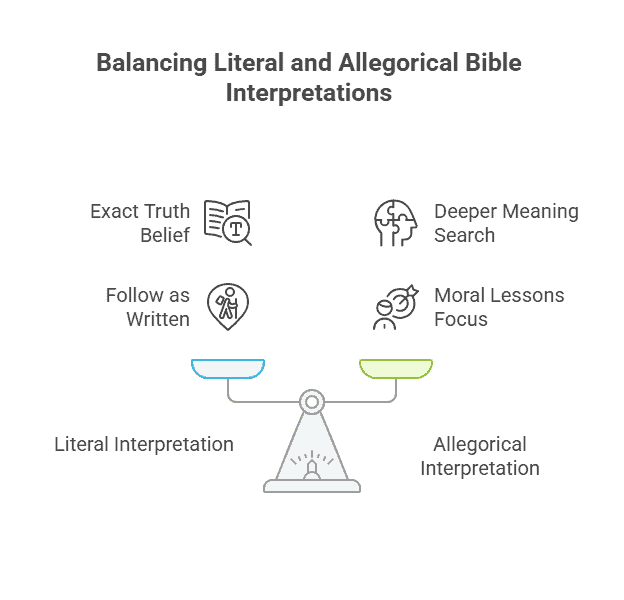Main Themes of the Bible
Old Testament
In the Old Testament, key themes such as creation, covenant, and redemption play important roles in the stories told. The book of Genesis tells the story of how God created the world and everything in it.
The covenant between God and his people is seen throughout the Old Testament, where God promises to protect and guide his followers.
Redemption is a common theme as well, showing how God forgives sins and can bring about new beginnings. These themes help to show the power and love of God in the Old Testament stories.
New Testament
In the New Testament, there are many stories and teachings about salvation, grace, and the kingdom of God. Salvation is when someone is saved from their sins and given eternal life. Grace is when God shows kindness and forgiveness to people even though they don’t deserve it.
The kingdom of God is the idea that God’s rule and love are present on earth. These themes are important in the New Testament because they show how much God loves us and wants us to be with Him forever.
We can learn more about these ideas by reading the Bible and listening to what Jesus taught.
Connections Between the Testaments
In both the Old and New Testaments of the Bible, there are many themes that are connected and build upon each other. One theme that is present in both is the idea of redemption and salvation. In the Old Testament, God promises to send a savior to redeem his people from sin and bring them back into relationship with him.
This promise is fulfilled in the New Testament with the arrival of Jesus Christ, who is seen as the ultimate savior who brings salvation to all who believe in him. Another theme that is connected in both testaments is the idea of God’s faithfulness and love for his people. Throughout the Bible, we see examples of God’s faithfulness to his promises and his constant love for his people, even when they turn away from him.
This theme is carried over from the Old Testament into the New Testament, where we see God’s love and faithfulness demonstrated through the life, death, and resurrection of Jesus.
Overall, the themes in the Old and New Testaments are connected and build upon each other to show the continuous story of God’s plan for redemption and salvation for all people.
Games and Activities
Structure of the Bible
Books of the Old Testament
In the Old Testament, there are different categories of books that help us understand the history and teachings of the Jewish people.
Pentateuch
One category is the Pentateuch, which includes the first five books of the Bible: Genesis, Exodus, Leviticus, Numbers, and Deuteronomy. These books tell the story of creation, the Israelites’ journey out of Egypt, and the laws given to them by God through Moses.
Another category is the Historical books, which tell the stories of the Israelites’ conquest of the Promised Land, their kings, and their struggles with other nations. Some examples of Historical books are Joshua, Judges, Samuel, and Kings.
Wisdom
The Wisdom books offer advice and teachings on how to live a good and righteous life. These books include Psalms, Proverbs, and Ecclesiastes, among others. They provide insight into how to make wise decisions, how to treat others with kindness, and how to have a strong faith in God.
Prophetic
The Prophetic books contain messages from prophets who were chosen by God to speak to the people of Israel. These books often include warnings about the consequences of disobeying God’s laws, as well as promises of redemption and hope for the future. Some examples of Prophetic books are Isaiah, Jeremiah, and Ezekiel.
| Pentateuch | Wisdom | Prophetic |
|---|---|---|
| The Pentateuch is the first five books of the Old Testament. It includes stories about the creation of the world, the lives of important figures like Moses and Abraham, and the laws given by God to the Israelites. | Wisdom literature in the Old Testament includes books like Proverbs, Job, and Ecclesiastes. These books offer advice on how to live a good and moral life, and explore the mysteries of human existence. | The Prophetic books in the Old Testament are written by prophets who were chosen by God to deliver messages to the Israelites. These books often contain warnings about the consequences of disobedience and predictions of future events. |
Overall, these categories of books in the Old Testament help us understand the history, teachings, and messages of the Jewish people and their relationship with God. Each category offers unique insights and lessons that continue to be relevant and important for people of all ages to learn from and apply to their own lives.

Books of the New Testament
Exploring the New Testament can be an exciting journey filled with stories of Jesus, his followers, and the early Christian church. The New Testament is divided into different categories of books: the Gospels, Acts, Epistles, and Revelation.
Gospels
The Gospels, including Matthew, Mark, Luke, and John, tell the story of Jesus’ life, teachings, death, and resurrection.
Acts
Acts describes the early days of the church and the spread of Christianity.
Epistles
The Epistles, or letters, were written by early Christian leaders like Paul and Peter to instruct, encourage, and correct believers in various churches.
Revelation
Finally, Revelation is a book of prophecy and visions about the end times.
| Category | Description |
|---|---|
| Gospels | The Gospels are the first four books of the New Testament and they tell the story of Jesus’ life, teachings, death, and resurrection. They are written by Matthew, Mark, Luke, and John. |
| Acts | Acts is a book that follows the Gospels and tells about the early days of the Christian church. It focuses on the work of the apostles and the spread of Christianity. |
| Epistles | The Epistles are letters written by various apostles to the early Christian communities. They provide guidance, encouragement, and teachings on how to live a Christian life. |
| Revelation | Revelation is the final book of the New Testament and it contains visions and prophecies about the end times. It offers hope and reassurance to believers in the face of persecution and hardship. |
Each category of books offers unique insights into the Christian faith and provides guidance for living a life in accordance with Jesus’ teachings. By exploring these books, readers can deepen their understanding of Christianity and grow in their faith.

Interpreting the Bible
Literal vs. Allegorical Interpretation
When we talk about understanding the Bible, there are two main ways to look at it: literally and allegorically. Taking the Bible literally means believing that every word in it is true and should be followed exactly as written. This approach assumes that everything in the Bible happened exactly as it is written.
On the other hand, interpreting the Bible allegorically means looking for deeper meanings and symbols in the text. Instead of taking everything at face value, allegorical interpretation seeks to uncover the spiritual and moral lessons that the stories in the Bible are trying to teach us.
Both approaches have their merits and can help us gain a better understanding of the Bible. Some people prefer to take the Bible literally because they believe it is the word of God and should be followed without question. Others find allegorical interpretation more meaningful because it allows them to see the Bible as a guide for living a moral and spiritual life.
For example, the story of Jonah and the whale could be seen as a lesson about facing your fears, rather than a factual account of a man being swallowed by a giant fish. Both approaches have value and can help people understand and apply the teachings of the Bible in their own lives.
Ultimately, whether you prefer a literal or allegorical approach to the Bible, what’s most important is that you are open to learning and growing from the wisdom and teachings found within its pages.

Context and Cultural Background
Understanding the historical context and cultural background of the Bible is important because it helps us to better understand the stories and teachings within it.
By learning about the time period in which the events of the Bible took place, we can gain insight into the customs, beliefs, and traditions of the people who lived during that time.
This can help us to interpret the messages and lessons in the Bible in a more accurate way. For example, knowing about the ancient cities, rulers, and conflicts mentioned in the Bible can give us a clearer picture of the challenges faced by the characters in the stories.
Additionally, understanding the cultural background of the Bible can help us to appreciate the diversity of perspectives and experiences that are reflected in its pages. By exploring the historical context and cultural background of the Bible, we can deepen our understanding and appreciation of this important text.
Application in Modern Life
In order to apply the teachings and principles of the Bible to contemporary issues and personal growth, it is important to first understand the messages that are conveyed in the scriptures.
The Bible teaches us about love, forgiveness, compassion, and kindness. These values can be applied to our daily lives by treating others with respect and empathy.
When facing modern challenges such as bullying, racism, or environmental issues, we can turn to the Bible for guidance on how to respond with love and understanding.
Personal growth can also be achieved by following the teachings of the Bible. By reading and reflecting on scripture, we can gain wisdom and insight into how to live a fulfilling and purposeful life.
Through prayer and meditation, we can strengthen our relationship with God and seek guidance on how to overcome obstacles and achieve our goals. By applying the teachings of the Bible to our lives, we can become better individuals and make a positive impact on the world around us.
Games and Activities

